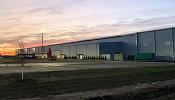Partner
- FMA
- The Fabricator
- FABTECH
- Canadian Metalworking
Categories
- Additive Manufacturing
- Aluminum Welding
- Arc Welding
- Assembly and Joining
- Automation and Robotics
- Bending and Forming
- Consumables
- Cutting and Weld Prep
- Electric Vehicles
- En Español
- Finishing
- Hydroforming
- Laser Cutting
- Laser Welding
- Machining
- Manufacturing Software
- Materials Handling
- Metals/Materials
- Oxyfuel Cutting
- Plasma Cutting
- Power Tools
- Punching and Other Holemaking
- Roll Forming
- Safety
- Sawing
- Shearing
- Shop Management
- Testing and Measuring
- Tube and Pipe Fabrication
- Tube and Pipe Production
- Waterjet Cutting
Industry Directory
Webcasts
Podcasts
FAB 40
Advertise
Subscribe
Account Login
Search
How fabricators achieve breakthrough improvements
When traditional lean manufacturing approaches aren’t enough in the fab shop
- By Paul Neblock
- December 5, 2020
- Article
- Shop Management
Lean manufacturing is about identifying and eliminating waste and associated wait time between value-adding steps. Six Sigma focuses on optimizing output and minimizing variation. These two improvement methods share two shortcomings for companies that must improve their performance dramatically within a short time frame.
First, they champion incremental improvements over a long period. They can add up to significant changes over months and years, but some operations simply can’t wait that long. Second, both techniques assume the existing process or method is the optimal way to perform the operation—which in process-intensive industries like metal fabrication is highly likely to be an incorrect assumption.
Here’s where breakthrough improvements come into play. These involve fundamental process changes that produce at least a 50% improvement in key performance areas, including cycle time, productivity, quality, and flow.
The two case studies that follow—one about a fabricator of steel wear plates and the other about a tube drawing operation—illustrate how breakthrough improvements can benefit traditional manufacturers with well-established lean manufacturing and Six Sigma programs. They reveal how breakthrough improvements, like lean manufacturing, do require detailed knowledge of the current-state value stream.
That said, breakthrough improvements differ from lean manufacturing and Six Sigma in two ways. First, the rate of improvement is very quick. Visualize a “step” instead of a gradual slope. Second, improvements demand process curiosity, innovation, and the courage to try new ways of doing things.
Case Study: High-performance Cutting
The Challenge: A heavy plate fabricator had a significant delivery problem for small, complex-shaped wear parts bolted or welded onto excavation buckets or blade assemblies of construction equipment. The wear parts came in many shapes and sizes and, depending on how they were used, could last a few months or wear out in a day.
The fabricator played in a highly competitive market with many aftermarket and OEM suppliers, and wear plate demand was quite volatile. Quick delivery times were crucial.
The fabricator supplied 10 product families totaling 30,000 pieces per year. Parts ranged from 0.5 to 1.5 in. thick, with most being made from 1-in. plate. The most difficult features to cut were slots and holes (see Figure 1).
The company had a significant backlog even though the cutting workcell ran five days a week over multiple shifts. Some pieces on the nest took as little as 1 minute to cut, while others took 11 minutes; the average cycle time was 5.3 minutes per piece.
The cycle time in and of itself wasn’t a problem, but the setup time and excessive rework were. Because operators were using heavy, awkward fixtures and a forklift to swap plates, each order required an average setup time of 30 minutes. Even worse, the rework average for all parts was 25%, though the rework rate climbed to 45% for parts with internal slots. Such rework added not minutes or hours but days to the order-to-ship time.

Figure 1. The most difficult features for the existing cutting process were parts with slots and holes, many of which failed to meet quality requirements.
To retain the customer, the fabricator needed to make dramatic, simultaneous improvements to setup time, cycle time, and quality. To carry out this breakthrough improvement called for a structured approach (see Figure 2) involving operations, manufacturing and industrial engineers, and quality assurance personnel.
Assess the Current State. A four-head oxyfuel system cut parts from raw stock. The gantry cutter had movable heads, a centralized cutting gas control manifold, and a water table. Some parts were cut with all four heads while others used only two.
Even though the base machine was old, the maintenance department had checked the system for problems like variations in fuel flow, leaks, mechanical wear in racks, and misalignments. The maintenance team even checked with the cutting torch supplier to ensure the proper torches and orifices were being used for this application.
The operators were trained in the correct machine setup with clear visual work instructions, setup sheets, and proper protective equipment. And the entire process was audited for compliance to the setup and operating parameters.
The improvement team collected data in a structured manner. They identified work orders to observe, determined how data would be collected, and decided how parts would be inspected. To ensure a sound process capability analysis, the team decided to analyze only those lots that had at least 30 pieces, and every cut part was inspected to ensure compliance to specifications.
To perform the study, team members selected a representative part from each product family, based on annual volume, product features, and tolerances. They collected process data such as part numbers, cycle times, and setup times. They also took photos and marked each part to be used for inspection and rework data. Qualified inspectors measured and recorded the dimensions. And the improvement team documented the rework operations and associated time for each part. They documented the operating costs for cutting gases, consumables, and cutting tips, then compiled historical setup and order-to-ship data.
To meet customer deadlines, the fabricator needed to shorten setup times by at least 50% and reduce rework by at least 90%. Performance at this level would enable the fabricator to respond quickly, meet customer needs, and eliminate chronic backlogs.
Research Alternatives. As the team members collected data, they researched alternative cutting technologies for this application using reports from The FABRICATOR magazine and connections made at the FABTECH tradeshow. They identified plasma cutting, laser cutting, waterjet cutting, and more advanced oxyfuel cutting solutions.
After contacting suppliers and having sample parts cut, the team saw that high-definition plasma cutting appeared to be the most promising option. The company sent a request for quote including information about parts; volumes; and specifications; the cutting table size; as well as the raw material each part required, including the plate sizes and weights. Each prospective supplier submitted the following:
- Estimated cycle time
- Operating costs per hour
- Machine layout
- Utility hookups and facility requirements
- Fume extraction
- Remote machine diagnostics
- Operator and maintenance training
- Technical support for programming and problem-solving
- Spare parts and a preventive maintenance program
- Reference accounts with machines in operation
Through a series of whiteboard brainstorming sessions that included operators, manufacturing engineers, and maintenance personnel, the project team developed a highly efficient workcell concept. These sessions focused on:

Figure 2. Achieving breakthrough improvements requires a structured approach that assesses the current state, develops alternatives, and implements solutions.
- Operator safety – fumes, part lifting, fixture setup, daily cleaning and adjustments, and safety curtains for other operators.
- Setup reduction – quick-change fixtures, magnets to remove heavy parts, fixture locations in the workcell, templates, and visual aids to verify first cuts.
- Cell organization and flow – plate staging, part accumulation and removal, the cell’s 5S requirements.
- Maintenance access – provide safe space for both routine and repair of the entire cell.
Planning and Execution. The two most important elements in this phase were developing a detailed implementation plan and establishing clear accountability for project management and implementation. This included defining the project scope, establishing a cross-functional team, and determining the timeline.
Key steps included risk mitigation sessions with the team and suppliers to address concerns; detailed cell layout sessions to sort out the utilities, material flow, material handling, and safety concerns; development of quick-change fixtures with locators to enable fast, repeatable setups (see Figure 3); weekly project updates with all stakeholders addressing timing, risks, key accomplishments, and barriers; and, upon project completion, a formal recognition of project leaders and participants by their peers.
Results. The fabricator far exceeded the initial 50% improvement goal. Moving from a multitorch oxyfuel setup to a single-torch plasma machine, the fabricator shortened its average cycle time by 80%, based on total pieces per machine per hour. The huge time savings—even moving from four oxyfuel torches to just one plasma torch—had to do with the application’s quality requirements, especially for parts with slots and holes. To minimize defects, the oxyfuel operator had to allow extra time for positioning and start cycles, which slowed the oxyfuel cutting process considerably.
Moving to the plasma system reduced operating costs (including gases and consumables) by 50% and setup time by 70%. Most critically, total time devoted to rework plummeted 96% (see Figure 4).
Not long after the cell was in production, the improvement team identified additional part families and initiated a second project to integrate the new process. They ultimately achieved similar results.
Throughout this project, team members focused on the big picture: the order-to-ship cycle. Yes, average cutting cycle time and setup times plummeted. But increasing machine throughput alone didn’t get to the root of the issue. If it did, an oxyfuel system with an even greater number of torches could have been a potential solution, particularly since the application involved nests of identical parts. But the constraint wasn’t a throughput issue; it was a quality issue. The dramatic reduction in rework shortened the order-to-ship cycle not by minutes or hours but by several days.
Case Study: Tube Drawing Exotic Metals
A tube mill produced drawn tubes of exotic metals—including 17-7PH, 21-6-9, and 300 series stainless steel—for demanding jobs such as pump shells, chemical processing, and various aerospace applications. Any losses from process scrap severely affected customer deliveries and profitability.
The Challenge. Processing these tubes to exacting standards started with gas tungsten arc welding the hollows from strip, followed by cleaning, annealing, and straightening the hollows prior to drawing to the final size (see Figure 5). Each step took a few days to execute as many orders were flowing through shared work centers in the plant.
Unfortunately, internal scratches and surface finish problems emerged after drawing, producing significant scrap losses that ranged from 25% to 100% of every order. Workers often ended up producing some customer orders more than once. Since the drawing operation was near the end of the value stream, a great deal of cost was added to each order, so scrap was extraordinarily expensive.
Assess the Current State. To determine the cause of scratches on the inside diameter (ID), a cross-functional team conducted a root-cause analysis. The potential causes abounded. Was the weld bead too high? If so, that could lead to localized pressures. Did the welded tube diameter vary too much? Out-of-round tubes can cause uneven drawing forces. What about the draw lubrication? Was it breaking down during the process? Problems also could have been caused by inadequate annealing before drawing, surface issues on the carbide draw plug, as well as a misaligned draw bench.
Team members documented the weld bead height and found that, yes, it did vary too much. So they scrutinized the welding process and ultimately found that if they increased the size of the ID planishing mandrel, they could reduce the bead protrusion into the ID to 0.005 in. or less. The team implemented statistical process control to monitor and control this critical dimension.
They found that annealing was consistent across alloys and jobs and, thus, was ruled out, and they found the draw plugs were in excellent condition and well-controlled. Team members found one draw bench was slightly misaligned, so they aligned and corrected the issue.
Unfortunately, the scratching problem persisted. This left the draw-lube performance as the most likely cause of scratches. Draw lube, introduced before drawing at the end of the tube, provides the lubricity and protection between the tube and draw plug during the drawing process. Even the slightest breakdown in lubricant properties can result in microwelding of metal onto the plug, which in turn can scratch the tube ID and scrap the entire tube—a significant waste, considering each tube costs up to $2,000.
Research Alternatives. The team combed the world for suppliers and found that lubricant came in two different forms, heavy paste and thick liquid.
The team identified potential alternatives, but then received some skepticism and pushback from the draw bench operator. To avoid any hint of bias, the team followed design-of-experiment (DOE) protocols and randomly changed the lubrication type for each tube. Draw speed was controlled to within existing process parameters (between 10 and 15 feet per minute), and after drawing, each tube was inspected immediately for any scratches. The held draw plug was checked as well for any material pickup.
Very quickly team members found that one custom-blended product from a small European supplier blew away the alternatives (see Figure 6), with no noticeable scratches and an ID roughness average of less than 10 microns. Additional trials confirmed the results, and very quickly the plant moved to the new lubricant, which reduced scrap from a rate of 50% to near zero across multiple alloys.
Quick, Dramatic Improvements
Note that no product brand names were mentioned here, and for good reason. The process behind breakthrough improvements applies anywhere, but the solutions, including the products chosen, do not. These days fabricators have more technology options than ever. For instance, some advanced oxyfuel systems effectively automate many process setup procedures. It just so happened that high-definition plasma technology was a better fit for the application—and the breakthrough improvement method provided an objective process that defined what “better fit” really meant.
Overall, breakthrough improvements play a critical role in helping companies with tough, long-unresolved problems. They tackle areas with high scrap or rework rates, as well as bottleneck operations that affect the customer.
To be successful, such improvements require company leaders who encourage innovation, research, and persistence when tackling tough problems. They also need technical problem-solvers who search far and wide for potential solutions—and who aren’t constrained by company or industry norms.
About the Author
subscribe now

The Fabricator is North America's leading magazine for the metal forming and fabricating industry. The magazine delivers the news, technical articles, and case histories that enable fabricators to do their jobs more efficiently. The Fabricator has served the industry since 1970.
start your free subscription- Stay connected from anywhere

Easily access valuable industry resources now with full access to the digital edition of The Fabricator.

Easily access valuable industry resources now with full access to the digital edition of The Welder.

Easily access valuable industry resources now with full access to the digital edition of The Tube and Pipe Journal.
- Podcasting
- Podcast:
- The Fabricator Podcast
- Published:
- 05/07/2024
- Running Time:
- 67:38
Patrick Brunken, VP of Addison Machine Engineering, joins The Fabricator Podcast to talk about the tube and pipe...
- Trending Articles
White House considers China tariff increases on materials

A deep dive into a bleeding-edge automation strategy in metal fabrication

A visit to Automate 2024 reveals the future might be now

Majestic Steel Arkansas fully operational

Rivian to expand Illinois facility to manufacture midsized SUV

- Industry Events
Laser Welding Certificate Course
- May 7 - August 6, 2024
- Farmington Hills, IL
World-Class Roll Forming Workshop
- June 5 - 6, 2024
- Louisville, KY
Advanced Laser Application Workshop
- June 25 - 27, 2024
- Novi, MI
Precision Press Brake Certificate Course
- July 31 - August 1, 2024
- Elgin,





























